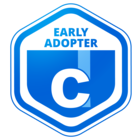We are a software company with three primary branches: Internal Staff, External Customers and External Partners (who work with us to support implementations and sell our platform).
We have resources that fall into distinct functional Channels such as “planning for your implementation” or “integrating (our software) with external systems”
Most of these functional Channels are relevant for All three branches noted above BUT we need the ability to tailor the specific Assets presented for each branch within a given Channel, e.g. in the “Planning” channel, we want to post:
- 3 PPT guides visible to All (Staff, Partner, Customer)
- 1 Video visible only to Staff & Partners (not Customers)
- 1 Xcel file visible only to Staff
Currently, doing this requires 3 different versions of the same “Planning” Channel, where visibility is set by Branch on each version:
- Customer version with only the 3 PPTS
- Partner version with PPTS and video
- Staff version with all Assets
We’ve been experimenting with Cohorts as a solution - and have created three Groups that mimic our Branch structure (Staff, Partners, Customers).
BUT, I believe Cohorts assumes that only members of each cohort group will be uploading content to the channel (and visibility is determined by the group identity of the member uploading or asking questions).
We would like SA’s to be able to upload content to the Channel and designate which cohort group can see it. I believe that currently, the system assumes that any content uploaded by an SA should be visible to all. Are we understanding this correctly? If so, this change is CRITICAL to our design structure and use of Channels for collaborative learning.




